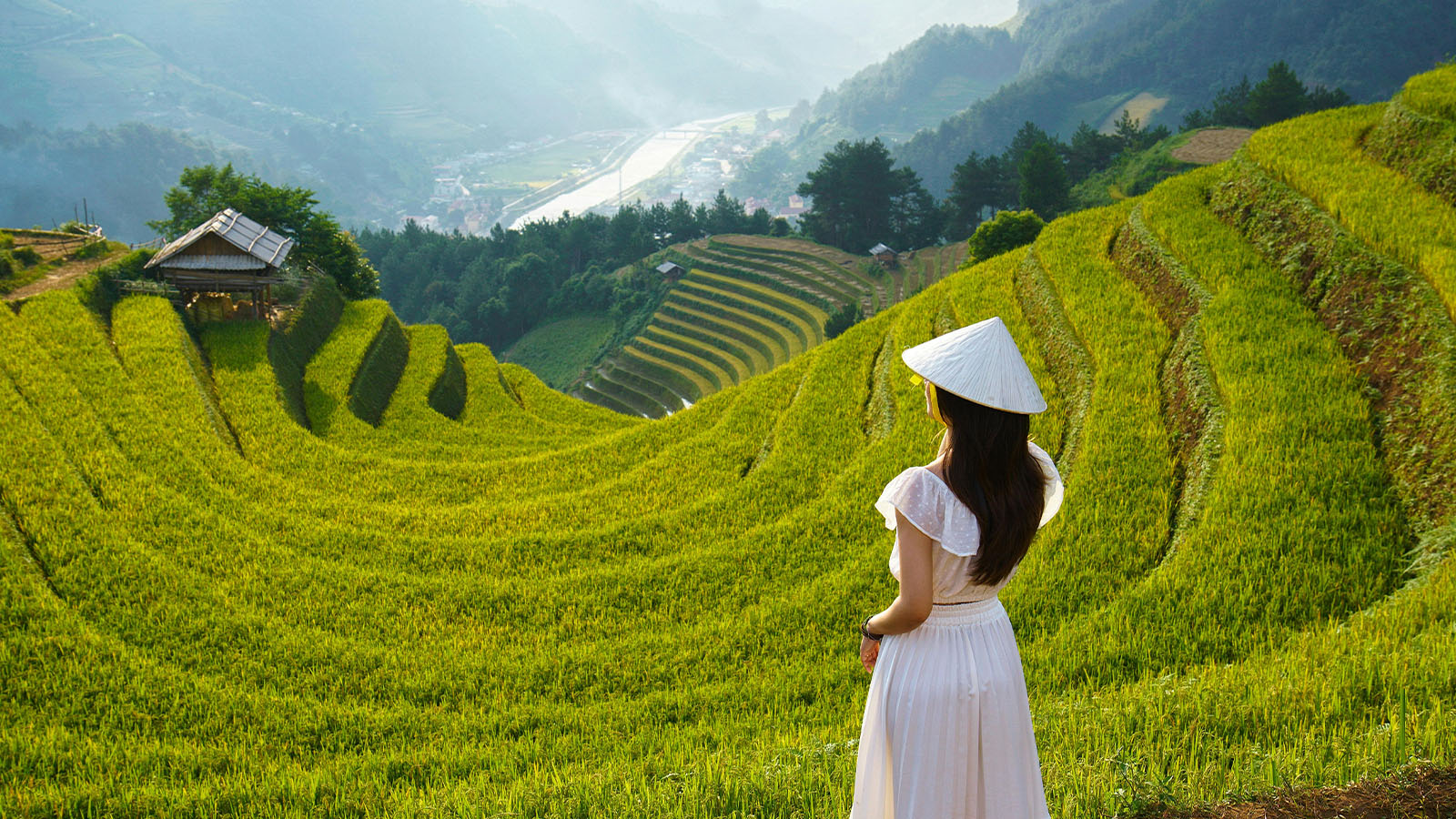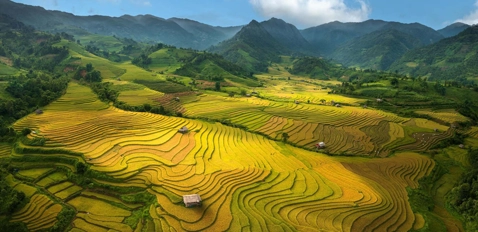Imperial City of Hue : An UNESCO World Heritage Site
Nestled along the serene banks of the Perfume River in central Vietnam lies a captivating testament to the nation's rich imperial history—the Hue Imperial City. Steeped in grandeur and historical significance, this ancient citadel served as the imperial seat of the Nguyen Dynasty for over a century, leaving an indelible mark on Vietnam's cultural landscape. As the heart of political, administrative, and cultural life during its heyday, the Hue Imperial City stands as a living testament to the resilience of Vietnamese heritage.
From its fortified walls and intricate palaces to the vibrant cultural tapestry that adorns its grounds, we delve into the architectural marvels and storied past that make this UNESCO World Heritage Site a must-visit destination. Join us as we unravel the layers of history, unveiling the secrets and cultural treasures that lie within the ancient walls of Hue Imperial City.
Hue Citadel
The Hue Citadel is a fortified center in Hue; it was the capital of the Nguyen Dynasty for 140 years, from 1805 to 1945. Currently, the Hue Citadel is one of the monuments within the Complex of Hue Monuments, recognized by UNESCO as a World Cultural Heritage Site on March 29, 1993.
The Citadel is a vast complex surrounded by walls and a moat. The Hue Citadel consists of three rings of fortifications—outer, middle, and inner—built in the style of Vauban (a French military engineer). It covers an area of 520 hectares, with a perimeter of over 10,000 meters. The walls are 6 meters high and 20 meters thick, with both inner and outer sides covered with bricks and the space in between filled with earth.
The Citadel has 10 gates, named based on their directions. The Southeast gate is called Thuong Tu, the main East gate is Dong Ba, and the Northwest gate is An Hoa. Interestingly, to acquire such a vast piece of land, Gia Long, in the past, relocated 9 villages for land reclamation and adjusted the natural river flows to establish a hydraulic system within the Citadel.
Within the Hue Citadel are the Hue Imperial City and the Hue Forbidden Purple City, collectively known as Dai Noi, the construction of which began in 1804 and was completed in 1833. This was the central hub for political and administrative activities and served as the royal family's residence.
Hue Imperial City
Hue Imperial City is the central area of the complex, with its sides in the South and North measuring 640m, and its sides in the East and West measuring 568m. The surrounding walls are made of bricks, 4 meters high and 1 meter thick, enclosing an area of 36 hectares. Outside Hue Imperial City, there’s a water trench and 10 stone bridges crossing it. Hue Imperial City has four gates:
Ngo Mon in the South for the king to use during royal processions
Hoa Binh in the North for the king's leisure
Hien Nhan in the East for officials and soldiers to enter and exit for duty
Chuong Duc in the West exclusively for the queen and concubines
The Imperial City contains the emperor's residence, ceremonial halls, and official buildings. Thai Hoa Palace, one of the most important and beautiful structures in Hue Imperial City, served as the venue for major ceremonies and imperial meetings during the Nguyen Dynasty. Thai Hoa Palace consists of the Main Hall and the Antechamber. The Main Hall has 5 chambers and 2 wings, serving as the venue for important events and imperial meetings. The Antechamber has 7 chambers and 2 wings, where guests are received and large banquets are organized.
Hue Forbidden Purple City
The Forbidden Purple City of Hue is located within Hue Imperial City. The fortress walls are 3.27m high and 0.72m thick, enclosing an area of over 9 hectares. The Forbidden Purple City has 10 entrances, with the main gate in the South called Dai Cung Mon for the king's use. Forbidden Purple City was the living space for the king and the royal family, featuring magnificent and opulent palaces adorned in gold.
Dien Tho Palace is a distinctive architectural complex within the Forbidden Purple City. It was a vast and meticulously designed space catering to the Queen and the King’s Mother during the Nguyen Dynasty. Dien Tho Palace comprises over 10 significant buildings arranged within a rectangular walled area covering up to 15 hectares. The Main Hall of Dien Tho Palace is the central building for important ceremonies and events. The Ta Tra House serves as a resting and tea enjoyment place for the queens. The Tinh Minh Pavilion is a space for spiritual rituals and prayers.
Thai Binh Lau was constructed to provide a tranquil space for the king to rest or read books. This meticulous and sophisticated structure is decorated with intricate ceramic and porcelain designs.
If you’ve heard of Nha Nhac Cung Dinh Hue (Hue Royal Court Music), you must have heard of Duyet Thi Duong. This area used to be a theater for the king, royal family members, and high-ranking officials of Hue to enjoy Tuong performances, a genre of Vietnamese theater. Today, Duyet Thi Duong has become a venue for performing Hue Royal Court Music for visitors to appreciate. Hue Royal Court Music is recognized by UNESCO as an intangible cultural heritage and is a proud cultural and artistic heritage of Vietnam.
Visiting Hue Imperial City
Opening hours
Summer: From 06:30 to 17:30
Winter: From 07:00 to 17:00
Entrance fee
To visit the Hue Imperial City, you need to buy tickets:
Adults: 200,000 VND/person
Children: 40,000 VND/person (from 7 to 12 years old)
Children under 6 years old: Free
Send us your comments about : Imperial City of Hue : An UNESCO World Heritage Site
Required fields *
You might also be interested
Travel ideas
Need some inspiration? Discover some of the best tours in Vietnam, which are highly appreciated by our clients. An excellent starting point to help you choose the right trip to Vietnam, Laos, Cambodia, Burma or Thailand, whether you are traveling alone, as a couple, as a family or with friends.
And because this trip is yours, feel free to customize it as you wish!
Vietnam Cambodia Itinerary 14 Days
Hanoi – Hoa Binh – Mai Chau – Ninh Binh – Halong bay – Hue - Danang – Hoian – Saigon – Ben Tre - Can Tho – Saigon - Siem Reap Angkor - Tonlé Sap - Siem Reap – Ta Prohm - Departure
Vietnam 14 Day Itinerary
Vietnam 14-day itinerary covers the country’s top highlights and quintessential experiences for an unforgettable journey.
Honeymoon Tour Pakcages In Vietnam 12 Days
Saigon Arrival - City Tour – Mekong Delta – Danang – Hoian - by flight - Da Nang – Hanoi - by flight – Halong - overnight on junk – Departure
Authentic Hoang Su Phi Trekking Tours
Hoang Su Phi trekking tours take you to stunning terraces, meet few tourists, connect with locals and enjoy authentic culture.
Best Nha Trang Beach Tour 4 Days
Saigon/Hanoi – Nha Trang relaxation – Saigon/Hanoi – Departure
Mekong Delta Bike Tour Itinerary 7 Days
Cycle through the Mekong Delta in 7 days, discovering floating markets, orchards, craft villages, and tranquil green islands.
Are you interested in this tour?



























Comment